Axle Swapping – In The Beginning:
There was a time not that long ago that Ranger/Bronco II owners were trying to figure out how to swap in Dana 44 solid front axles, and were swapping Ford 9-inch and 8.8-inch axles in to the rear. The goal was to add stronger axles for bigger tires. There were initial concerns about narrowing axles to fit under these vehicles, so for many, the hunt was on for the early Bronco axles and the Explorer 8.8’s.
But as offroaders became more extreme with their rigs, they looked for even more extreme axles. They moved on from the Dana 44 and 9-inch axles and began hunting down Dana 60 front and rears. But with rigs being built more and more to be able to handle rock crawling, enthusiasts found the limitations of the Dana 60, and began looking for even larger axles.
The GM 10.5 (14-Bolt) full-floating axle is quickly taking over in popularity. They’re a very strong axle, and can be picked up pretty cheaply. They’re not the only beefier option to the Dana 60 though. This article is to give you some information on the most common heavy duty full-floating axles being discussed today.
What Is A Full Floater?

(Full floating axles are quickly identified by the hub bolts at the end of the axle)
A full-floating axle can be identified by a protruding hub to which the axle shaft flange is bolted. These axles are able to carry more weight than a semi-floating or non-floating axle assembly because the hubs have two bearings riding on a fixed spindle. The axle shafts themselves do not carry any weight; they serve only to transmit torque from the differential to the wheels. Full-floating axle shafts are retained by the aforementioned flange bolted to the hub, while the hub and bearings are retained on the spindle by a large nut.
A nice feature about a full floating axle is that the axle shaft and wheel won’t come out of the axle if the shaft breaks, and you can remove the axle shaft without removing the wheel.
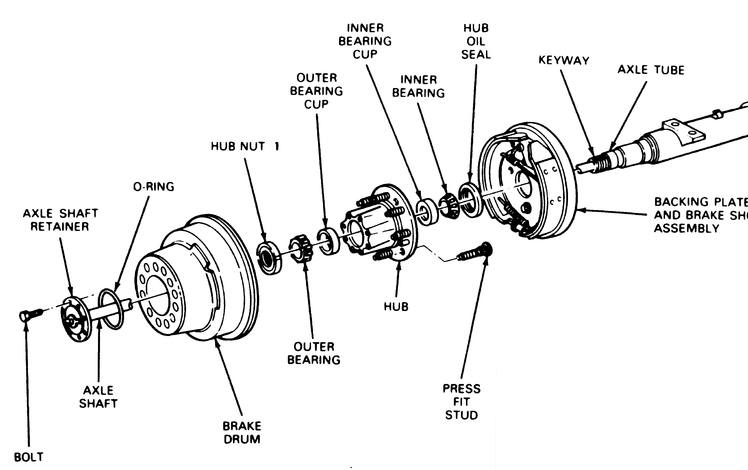
Above is an exploded view of a full floating axle.
Below is an exploded view of a non floating axle.
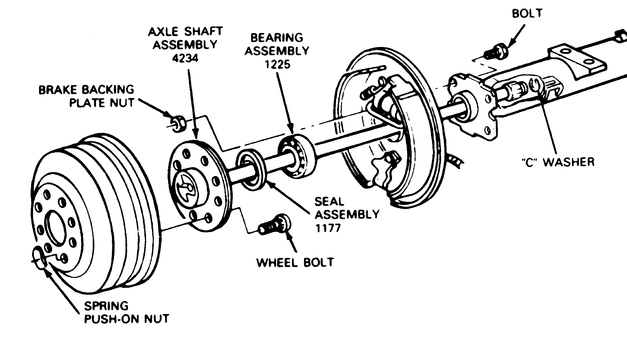
(Non floating axle above)

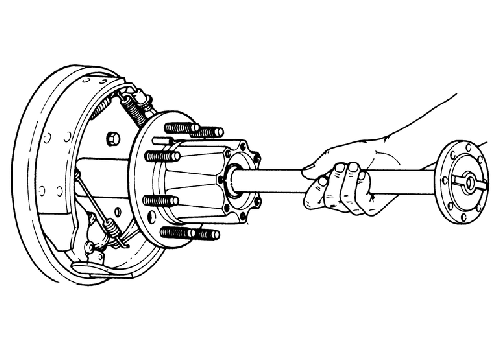
| Full Floating Rear Axles | ||||
| Dana 60 | Dana 70 | GM 14-Bolt (10.5) | Sterling 10.25 / 10.50 | |
| Ring Gear Diameter | 9.75″ | 10.5″ | 10.5″ | 10.25″ / 10.50″ |
| Pinion Shaft Diameter / Spline | 1.625 / 10 (early)
1.625 / 29 (late) |
1.75 / 10 (early)
1.75 / 29 (late) |
1.750 / 30 | 1.940 / 31 |
| Axle Shaft Spline / Diameter | 16 / 1.31″ (early)
30 / 1.31″ (late) |
23 / 1.5″ (early)
35 / 1.5″ (late) |
30 / 1.5″ | 35 / 1.5 |
| Tube Diameter | 3.125″ | 3.562″ | 3.48″ | 3.50″ |
| Tube Thickness | 0.25″ – 0.56″ | 0.31″ – 0.47″ | 0.21″ – 0.49″ | 0.44″ |
| Weighs | 260 pounds | 270 pounds | 450 Pounds (without brakes)
550 pounds (with brakes) |
310 pounds (single wheel)
330 pounds (dual wheel) |
| Housing | Grey Iron (early) Ductile Iron (late) | Cast Iron (early) Ductile Iron (late) | Grey iron | Nodular Iron |
| Max Output Torque Rating (Short Durations) | 5,500 lbs-ft | 8,000 lbs-ft
8,800 lbs-ft (D70HD) |
6,242 lbs-ft | 8,300 lbs-ft / 10,660 lbs-ft |
| Gross Axle Weight Rating (GAWR) | 6,000-6,500 lbs | 7,500 lbs 10,000 lbs (D70HD) | 5700-8600 lbs | 6250-8250 lbs |
| Max Tire Diameter Rating | 38-Inches | 44-Inches | 44-Inches | 40-Inches / 44-Inches |
| Found In | 1955-1985 Ford F-250
1974-1985 F-350 4×2 1968-1972 Chevy K20, 1973-1978 G-300 van |
1979-1980 Ford F-350 Dually
1957-1980 Dodge W-300 1981-1993 Dodge W-350 1957-1993 Dodge D-300, D-350 1994-2002 Dodge D2500 & W2500 1979-1986 GM C-30 & K-30 (mostly dually) 1987-1991 R/V-30 (dually)
|
1973-2001 Chevy K-20,V-20,K30,V30,K2500,V3500K3500 Pick up and some Suburbans
2001-Up Chevy K2500 1973-2001 GMC K2500, K3500 |
1985-1999 F250HD & F350 (Replaced the Dana 60 & 70)1999 & up have the 10.50 axle |
| Max Gearing | 7.17’s | 7.17’s | 5.13’s | 4.30 |
| Miscellaneous | Dana 60 & Dana 70 use the same differential covers. | Dana 60 & Dana 70 use the same differential covers. | Pinion support bearing. | 10.5 has a straddle mounted pinion (three sets of pinion bearing) and a 4 spider diff in stock open form. |
Dana 60 & 70:
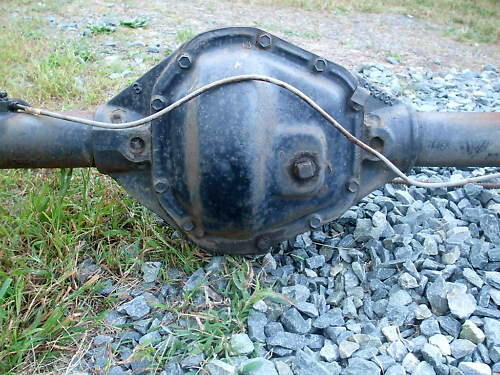
Dana 60
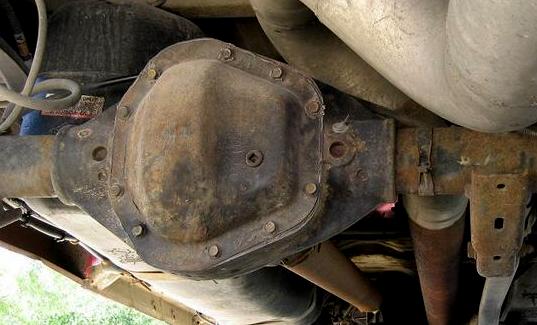
Dana 70
The Dana 60 and 70 are very similar in appearance. In fact, the differential covers will interchange between them. You can tell the Dana 70 from the Dana 60 because the housing sticks out past the cover.
GM 14 Bolt:
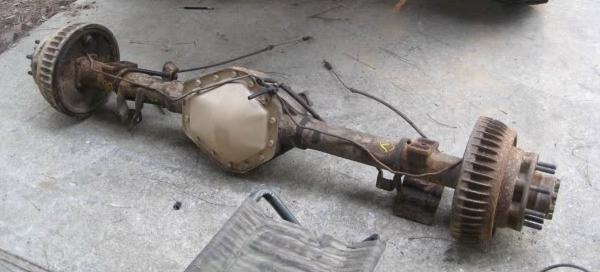
(GM 10.5 AKA GM 14-Bolt)
You can see how tall and thick this housing is. A common upgrade is to shave the bottom and weld on a plate to close it back up to allow more axle clearance.
Ford Sterling 10.25:
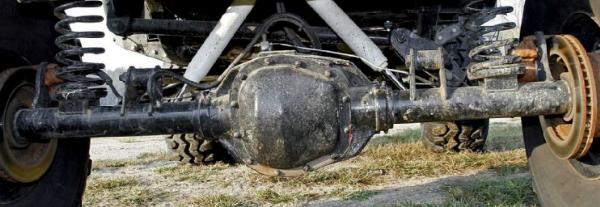
Ford 10.25. Note the ribbing around the edges.
Comparisons:
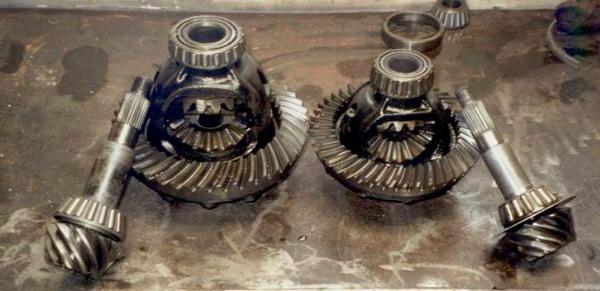
GM 14 Bolt Left – Dana 60 Right
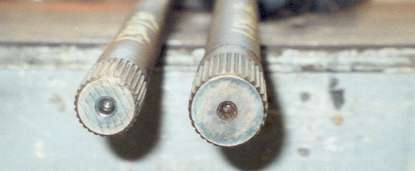
Dana 60 Left – GM 14 Bolt Right
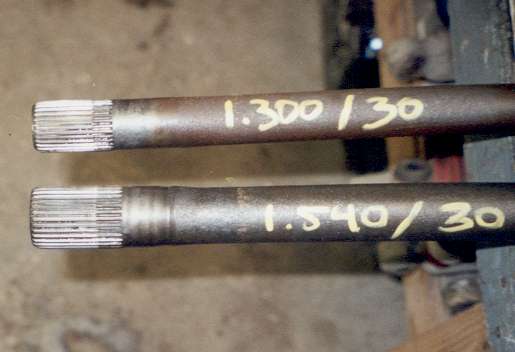
Dana 60 Top – GM 14 Bolt Bottom
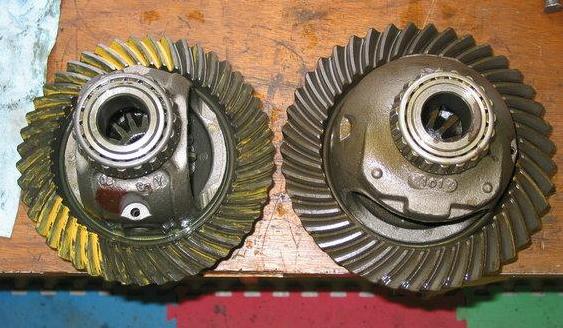
Dana 60 ring gear left – Dana 70 right
